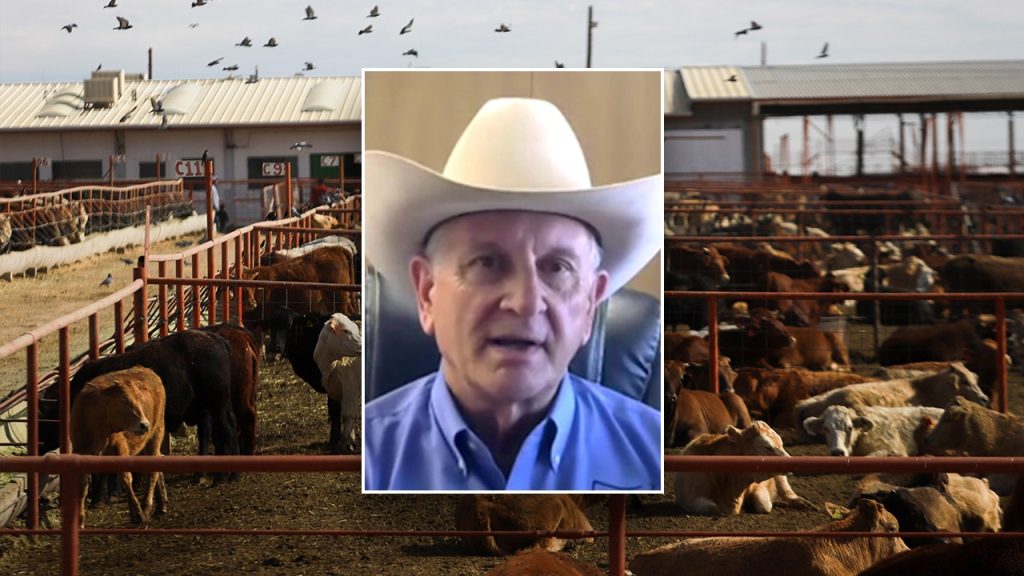In a pressing warning to U.S. ranchers, the president of the National Cattlemen’s Beef Association (NCBA), Buck Wehrbein, has highlighted the dire threat posed by an advancing infestation of New World screwworm in Mexico. This flesh-eating fly’s larvae can inflict fatal wounds on livestock, which raises significant concerns for American cattle herds. Despite assurances from the Trump administration of progress in managing the outbreak, Wehrbein insists that the crisis remains critical, especially with looming deadlines for action.
| Article Subheadings |
|---|
| 1) Overview of the New World Screwworm Threat |
| 2) Government Response and Industry Concerns |
| 3) Challenges in Bi-National Cooperation |
| 4) Recent Developments and Future Implications |
| 5) Long-Term Solutions for Biosecurity |
Overview of the New World Screwworm Threat
The New World screwworm is a parasitic fly whose larvae pose a substantial threat to livestock, as they burrow into the flesh of animals, causing serious injuries and often leading to death. Originating from Central America, this notorious pest was eradicated from the United States in the 1960s through extensive and coordinated efforts. Unfortunately, recent reports indicate that the screwworm is making a comeback, now creeping northward into Mexico and potentially threatening American cattle ranchers. The first detection in southern Mexico occurred late last year, signalling an urgent need for action from both U.S. and Mexican authorities.
Government Response and Industry Concerns
Buck Wehrbein, expressing his concerns as the NCBA president and a cattle feeder from eastern Nebraska, emphasized that U.S. Agriculture Secretary Brooke Rollins has taken important initial steps in combating this outbreak. These measures included a temporary halt on the import of Mexican cattle following confirmed cases of the screwworm. However, Wehrbein cautioned that with a deadline fast approaching for necessary actions, the urgency of the crisis cannot be overstated. “If this screwworm crosses into the United States, it could devastate our industry,” said Wehrbein, underlining the severity of the situation.
Challenges in Bi-National Cooperation
The cooperative effort to eradicate the New World screwworm relies heavily on a sophisticated sterile insect technique (SIT) program, which has historically been effective. This program involves the release of millions of sterile male flies by aircraft to control the screwworm population. Despite its success, recent interference from Mexican authorities has hindered these critical fly-release missions. Reports indicate that Mexico has not only delayed and blocked these operations but has also imposed additional fees and limited fly drops. Such bureaucratic roadblocks have allowed the pest to spread more freely, prompting heightened urgency among U.S. officials.
Recent Developments and Future Implications
In a recent letter dated April 26, Secretary Rollins issued a strong ultimatum to Mexico, demanding resolutions to the issues hindering cooperation by April 30. Failure to comply could result in strict trade restrictions, potentially halting imports of live cattle, bison, and equines. Such a move would not only impact Mexican ranchers but would also exacerbate supply chain pressures for U.S. ranchers, who are already facing challenges. Following these developments, Mexico agreed to allow U.S. sterile fly planes to land, which sent relief through American agricultural circles. Still, the fly release operations remain contingent on several contentious factors, such as the lifting of import duties.
Long-Term Solutions for Biosecurity
Wehrbein has suggested that the U.S. reconsider its reliance on foreign partners for biosecurity, advocating for domestic production of sterile flies to mitigate future crises. “If we had a facility here at home cranking them out, we wouldn’t be at the mercy of another country’s cooperation,” he remarked, pointing to vulnerabilities that could jeopardize food security. The cattle industry recognizes that vigilance and leadership are essential for sustaining its economic viability amidst numerous threats. Recent events serve as a potent reminder of the fragility of agricultural systems and the persistent risk of outbreak scenarios.
| No. | Key Points |
|---|---|
| 1 | The New World screwworm infestation poses a serious threat to U.S. cattle industry. |
| 2 | U.S. agriculture officials have implemented measures including import restrictions from Mexico. |
| 3 | Bureaucratic issues in Mexico have hindered effective pest control operations. |
| 4 | A recent ultimatum from the U.S. government has led to some progress and cooperation. |
| 5 | There is a call for more domestic biosecurity measures and production of sterile flies. |
Summary
The growing threat of the New World screwworm highlights the vulnerability of the U.S. cattle industry to external pests and the critical importance of bi-national cooperation for agricultural health. Though recent actions from U.S. officials indicate progress, ongoing challenges, including bureaucratic issues within Mexico, must be addressed to fully safeguard American herds. The necessity for self-sufficiency in biosecurity measures stands out as a vital component for future resilience against such agricultural threats.
Frequently Asked Questions
Question: What is the New World screwworm?
The New World screwworm is a parasitic fly whose larvae can cause severe injuries and fatalities in livestock by burrowing into their flesh. This pest was eradicated from the U.S. in the 1960s but has reemerged in Central America and is now posing a risk to U.S. cattle herds.
Question: What measures are being taken to control the screwworm outbreak?
U.S. agriculture officials have implemented restrictions on imports from Mexico and initiated an urgent cooperation effort to release sterile male flies in affected areas. These measures are essential for controlling the screwworm population and preventing its spread into the United States.
Question: Why is it important for the U.S. to have domestic biosecurity measures?
Domestic biosecurity measures, including the production of sterile flies, ensure that the U.S. is not overly reliant on foreign cooperation for agricultural health. This self-sufficiency can significantly enhance the country’s ability to respond quickly to outbreaks and protect its livestock.
